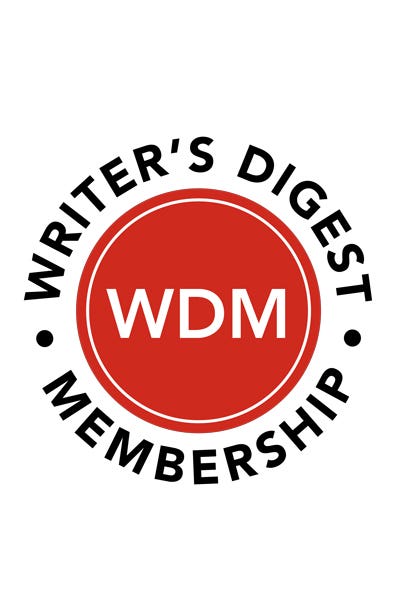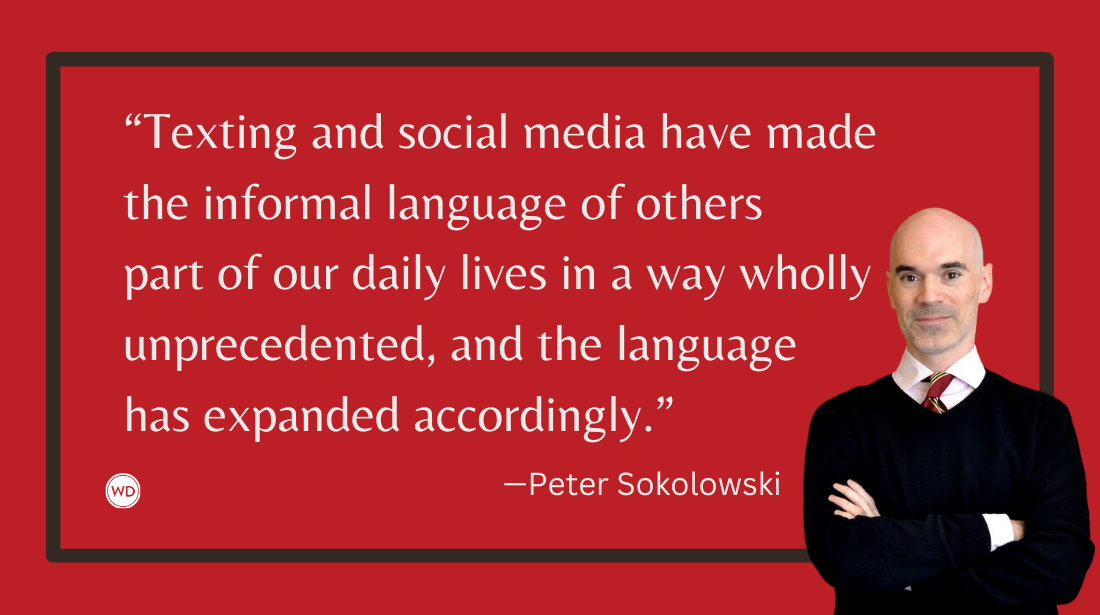How can something that happened 200 years ago help you get published today?
The key, of course, is that nice, round number—200. Not 203 years ago, or 197 years ago, but a bicentennial. And it doesn't have to be 200 to make editors sit up and take notice: 50, 100, even 30 and 75 are magic numbers when it comes to crafting magazine queries. Americans—and thus American editors—love history, but we're particularly fond of it wrapped up in anniversary packages.
Take Lewis and Clark, for example. How many articles did you read in 1999 or 2000 about these intrepid explorers? Zilch, zero, zip. Unless their names got mentioned in connection with the introduction of the Sacagawea dollar, Lewis and Clark got no press at all. They either need a new PR agent, or they need an anniversary. Fortunately for their posthumous careers, 2003 happens to be the bicentennial of the launch of their expedition.
So, last fall, not even waiting for the calendar page to actually turn, Time magazine put Mr. Jefferson's boys on its cover—heralding the start of a year-long frenzy of Lewis and Clark fever. (Heck, make that "multi-yearlong"—after all, 2005 will be the bicentennial of their arrival at the Pacific, and 2006 marks the 200th anniversary of their return home to St. Louis.) In the first few months of 2003, Lewis and Clark were making news in The New York Times and on more magazine covers. A quick search in late January of the News section of Google (news.google.com) found 629 mentions of "Lewis and Clark"—that's in the news, mind you, for two gents who last made real news when Thomas Jefferson was president.
Finding historical angles for queries
The point here is not to make you don buckskins and head West. The important lesson of Lewis and Clark's moment in the media spotlight is that this coverage, unlike most news, was completely predictable. The briefest study of the biggest events of 1803 would have tipped you off that this would be the bicentennial; a little research would have turned up the beginnings of anniversary plans from Virginia to North Dakota. And you could have "discovered" this story soon enough to pitch it to editors in early 2002—plenty of lead time for them to publish a timely feature.
Even if you're not big on writing about history, yesterday's news can spark article angles ranging from destination pieces to profiles to hobbyist how-to. Your travel feature on North Dakota, for example, is more likely to catch a jaded editor's eye if you point out that this often-overlooked state will be the site of a 10-day Lewis and Clark festival in October 2004. The renewed interest in Sacagawea might be the perfect hook for a story on contemporary Native American women. Or maybe you've come across someone who makes canoes or sews buckskin garb for reenactors—suddenly that story is timely.
Anniversary-linked articles spring from "news" you can plan for and predict. With a history book or two and a few hours of Internet surfing, you could easily have banged out a dozen queries related to Lewis and Clark for markets ranging from Travel + Leisure to Native Peoples. When the lucky editors you queried later saw Lewis and Clark pop up on the cover of Time magazine, they'd feel mighty smart—and so would you.
Celebrating anniversaries in style
But those 19th-century explorers were hardly the only anniversary topic waiting for you to exploit in 2003. The state of Ohio is also having a 200th birthday bash this year, giving a hook to every writer in the state for almost any Buckeye article imaginable. ("My article on `Akron, City of Rubber,' will be particularly timely as this vibrant city plays a key role in Ohio's 2003 bicentennial ...")
Harley-Davidson motorcycles mark their 100th birthday this year with a cross-country road trip and a centennial party in Milwaukee. Even if you don't know a darn thing about motorcycles, maybe you do know something about Harley's hometown of Milwaukee. Or you can write about Sturgis, S.D., where motorcycle enthusiasts gather by the thousands each summer. More interested in celebrities than cycles? Consider the Harley style that has attracted the famous, ranging from James Dean to Malcolm Forbes to Muddy Waters.
Anniversary article-starters don't have to be the object of public hoopla, either. Did you know, for instance, that 2003 is the 50th anniversary of the invention of Marshmallow Peeps? And the centennial of the creation of Crayola crayons? These icons of childhood could inspire ideas from the culinary to the crafty, from pop culture to parenting advice.
It's also the 150th anniversary of the invention of the potato chip. What might you do with that knowledge? You could pitch a business piece on the Frito-Lay company, or you could go the other way and offer advice for waist-watchers about kicking the junk food habit. How about a travel feature on Idaho, buckle of the nation's potato belt? Or a trade-magazine piece on trends in potato-chip flavorings or packaging?
Using research to stay ahead of the pack
All these are 2003 anniversaries, of course, and regular readers of this column will realize that for many magazines, planned six months or more in advance, that train, as the saying goes, has already left the station. Summer 2003 may just be heating up, but in publishing-land it's already Christmas in July and 2004 is around the corner.
How do you start finding next year's anniversaries? Every writer should have a few history books on the shelf, even if you have no interest in anything older than the Backstreet Boys. Almanacs and other quick-reference volumes are ideal for anniversary-hunting—at this point, you're interested in the bare bones of what happened when, not in plowing through a whole tome. You'll also want to own some of the titles in the Timetables series of books; The Timetables of American History (Touchstone Books), edited by Laurence Urdang, was released as an updated paperback in 2001, though most editions of these books, covering world history, science and African-American history, date from the early 1990s. Other helpful books are Celebrate Today, by John Kremer (Open Horizons), and Chase's Calendar of Events (McGraw-Hill).
The Internet, of course, is a godsend for this sort of research. Fortunately, there are people out there with nothing better to do than create timelines and minihistories of collectibles, snack foods (how do you think I learned about the potato chip turning 150?), robots, cars—you name it. Try searching for a topic you have some interest in, paired with a word such as "timeline" or "chronology." Doing a Google search on "timeline AND whaling," for example, instantly turned up chronologies of both whaling history and efforts to save the whales (the Greenpeace flagship Rainbow Warrior will turn 30 in 2007—mark your calendar), plus timelines on related topics such as Antarctic exploration. The next page of results included "A Gay Quaker Timeline" (evidently many early whaling captains were Quakers)—you're on your own developing anniversary queries there, sorry.
Even if you strike out seeking nice, round numbers on topics you might spin into stories, don't give up on the anniversary angle too quickly. Although, strictly speaking, potato chips first were crunched in 1853, the modern potato-chip cooker didn't come along until 1929 (75th anniversary in 2004). Lay's potato chips became the first brand to be sold nationwide in 1965, so they'll celebrate a 40th in 2005. Start cooking up those queries!
Recently, for instance, I was trying to come up with an anniversary angle to pair with the current spate of superhero movies (for an article that thus would be doubly timely). Unfortunately, the big one—Superman's first appearance—dates from 1938, and 65th anniversary seemed like stretching the celebratory math. But Jerry Siegel and Joe Schuster actually invented the Man of Steel five years earlier, in 1933, so I could write: "Seventy years ago, two Cleveland teenagers dreamed up Superman—and a new kind of hero ..."
And you thought those history and math courses back in school were just a waste of time for your writing career! Put them together and you have anniversaries—and article sales.
This article appeared in the July 2003 issue of Writer's Digest.









